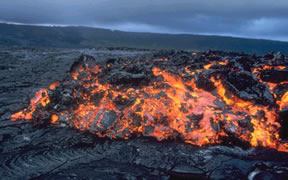This picture shows A'a' flowing over pahoehoe on Kilauea Volcano, Hawai'i.
Click on image for full size
Courtesy of USGS.
Basalt Rocks
Basalt is an extrusive igneous rock that is very dark in color. It is the most common type of rock in the Earth's crust and it makes up most of the ocean floor.
It is made of many dark colored minerals such as pyroxene and olivine. Basalt also contains some light colored minerals such as feldspar and quartz, but the amounts are small. Typically, you can't see most of the mineral crystals without using a microscope because quick cooling prevents large crystals from forming.
Basalt forms when lava reaches the Earth's surface at a volcano or mid ocean ridge. The lava is between 1100 to 1250° C when it gets to the surface. It cools quickly, within a few days or a couple weeks, forming solid rock. Very thick lava flows may take many years to become completely solid.
Two Hawaiian words are used to describe the two types of volcanic basalt: 'a'a and pahoehoe. 'A'a basalts have rough surfaces (that make barefoot people cry, "Ah! Ah!" as they walk across it). They form from fast flowing lava. Pahoehoe basalts have a smooth glassy surface that looks like many ropes. The "ropes" form when the surface cools, becoming solid rock while lava flows beneath it.
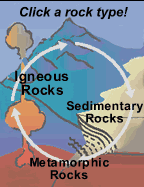
Last modified November 1, 2005 by Lisa Gardiner.
You might also be interested in:

Olivine looks like little green crystals. It is typically found in some igneous and metamorphic rocks. Often the crystals are so small that you need to use your hand lens or magnifying glass to see them
...more
As the Earth cools, hot material from the deep interior rises to the surface. Hot material is depicted in red in this drawing, under an ocean shown in blue green. The hotter material elevates the nearby
...more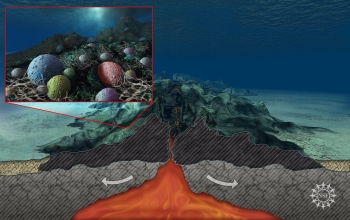
Has anyone ever told you that you shouldn’t eat things that you find on the floor? Well, the rules are different for bacteria. Scientists have found tons of bacteria at the bottom of the ocean that appear
...more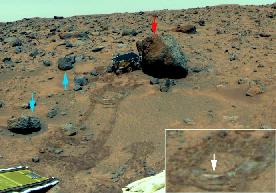
Even though the rocks seem to be much the same, scientists can see three basic differences in these rocks. These differences help them figure out more about weathering processes on Mars and where the soils
...more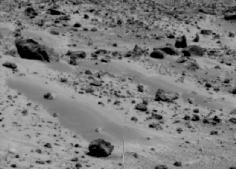
Sand grains on Earth are usually made of quartz. Sand grains of Mars seem to come from basalt. They seem to be particles which are cemented together, rather than round crystal fragments such as sand grains
...more
If you could travel to the center of the Earth, you would find that it gets hotter and hotter as you travel deeper. The heat is naturally produced when radioactive elements break apart. Within the Earth’s
...more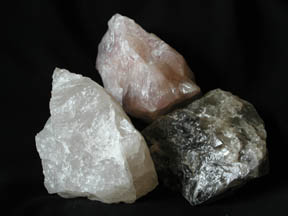
Spotting minerals is fun! There are many different types of minerals, each with a different name and a special set of characteristics. So, if you find a mineral that you do not recognize, you can use
...more



